American Indian people have lived along the Columbia and Snake Rivers for thousands of years. The confluence of these two rivers served as a camping area, a trading center, and a fishing site. Today this is Washington’s Sacajawea State Park. One of the exhibits in the Sacajawea Museum in the park illustrates the Plateau longhouse.
Along the Columbia River, Indian people lived in villages. Typically, the villages would have populations ranging from as few as 50 people to as many as 700 people. There were a few large villages with populations of 200 or more. Archaeologist James Keyser, in his book Indian Rock Art of the Columbia Plateau, reports:
“The Indians occupied villages primarily during the winter and the salmon fishing season, but old or injured people might remain year-round.”
The population and composition of villages was flexible. Individuals were not bound to a village and were able to move freely to another village when it suited them.
One of the common architectural forms among the people in this area was the longhouse which has the appearance of an A-frame shed up to 160 feet long and 15 feet wide. The longhouse was covered with tule mats. Tules are common marsh plants which grow at low elevations. They may grow to a height of more than 10 feet. The tule reeds used in the mats are hollow and provide good insulation in the winter.
Several families would live in a single longhouse. Fires were built down the center of the longhouse with each of the families in the longhouse having its own fire. According to the museum display:
“Plateau families returned to mat lodges to spend the cold winter months. The traditional winter dwelling housed an extended Plateau family that might include children, parents, grandparents, aunts, uncles and cousins.”
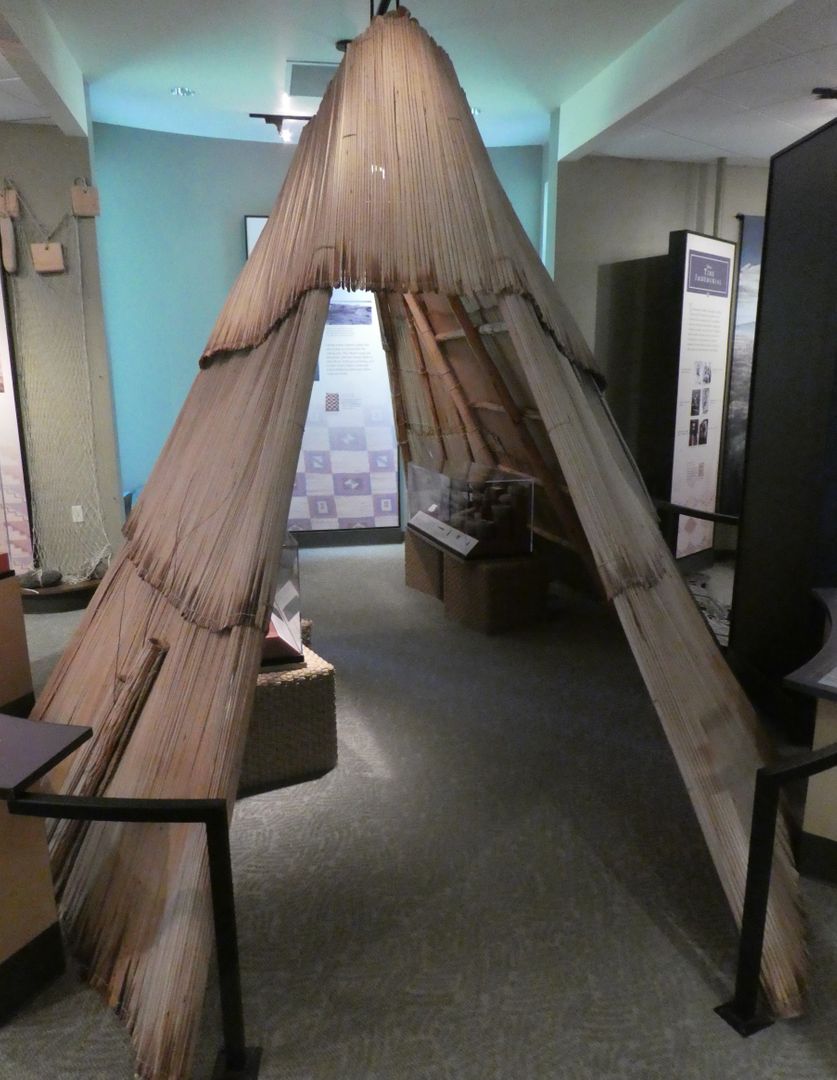 Shown above is the small longhouse which is displayed in the museum.
Shown above is the small longhouse which is displayed in the museum. 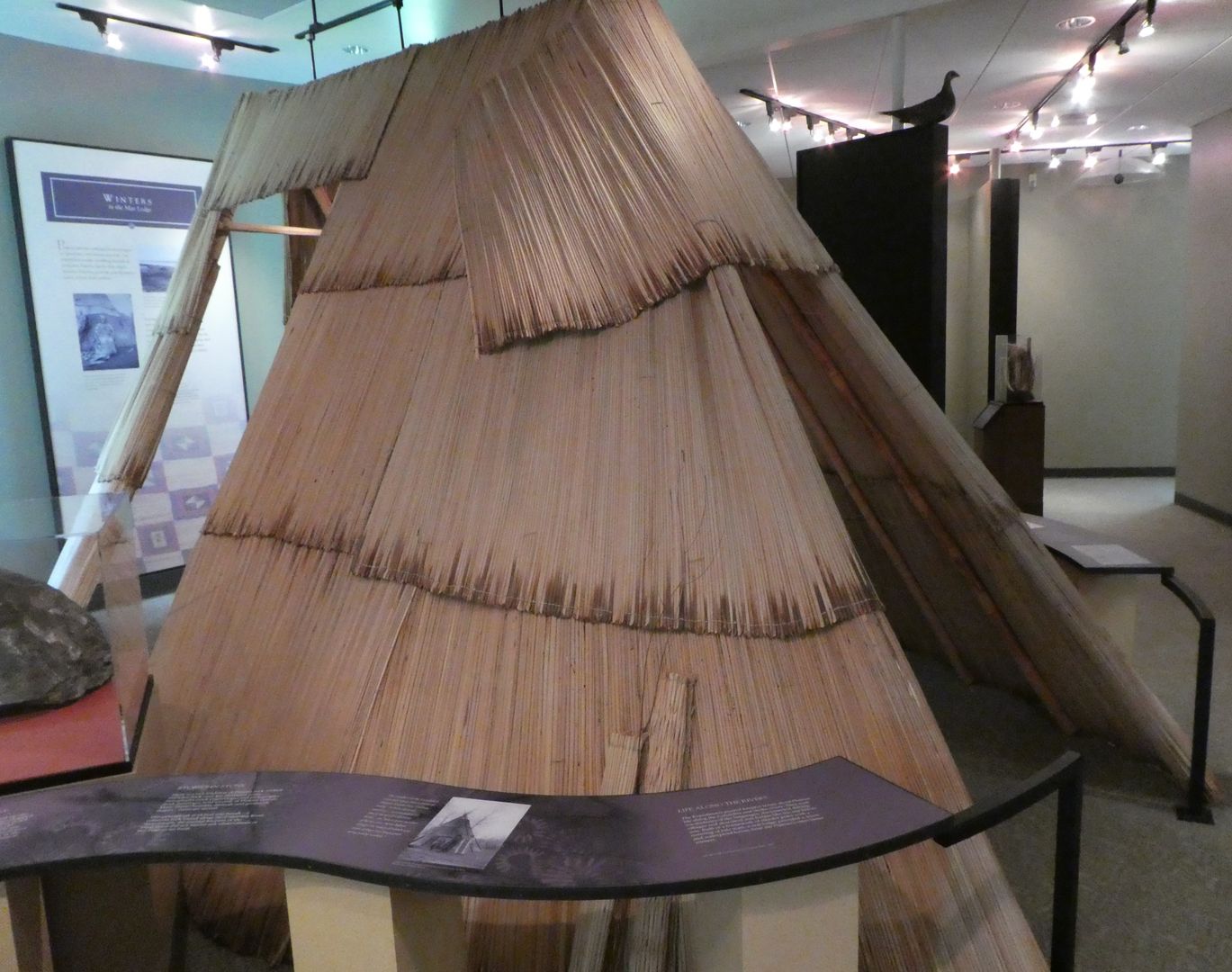
According to the museum display:
“During winter, families visited with one another and planned for the coming year. They shared songs and told stories. Children learned skills for daily life by watching and helping, and learned of their history, values and responsibilities by listening to elders’ songs and stories.”
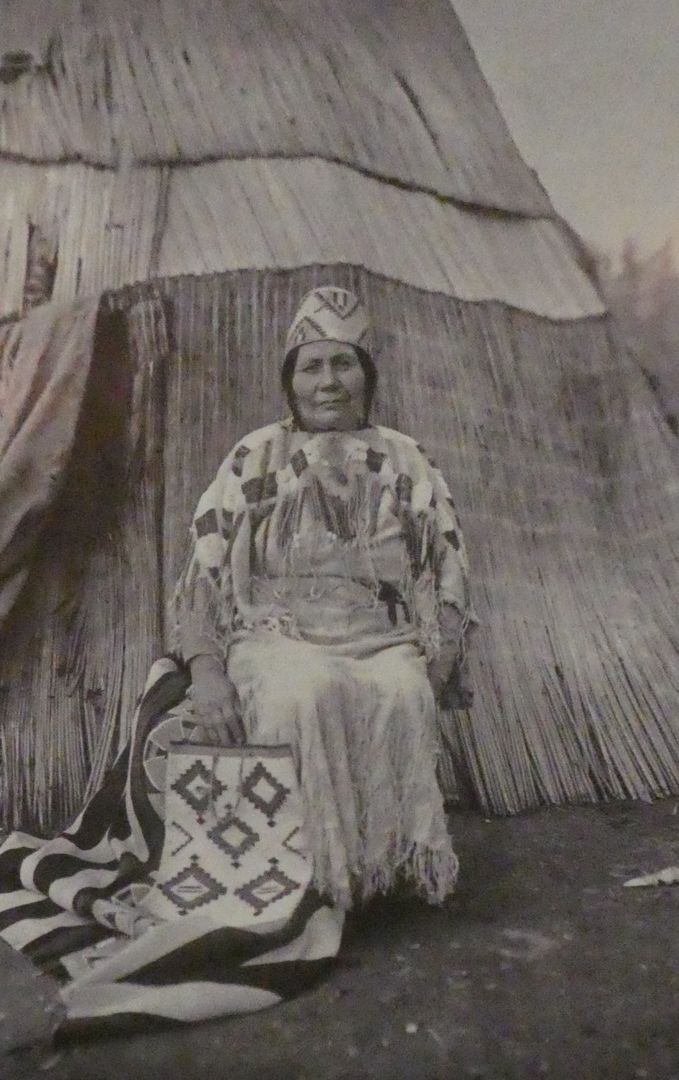 Edna Kash-Kash poses before a mat house on the Umatilla Reservation.
Edna Kash-Kash poses before a mat house on the Umatilla Reservation. 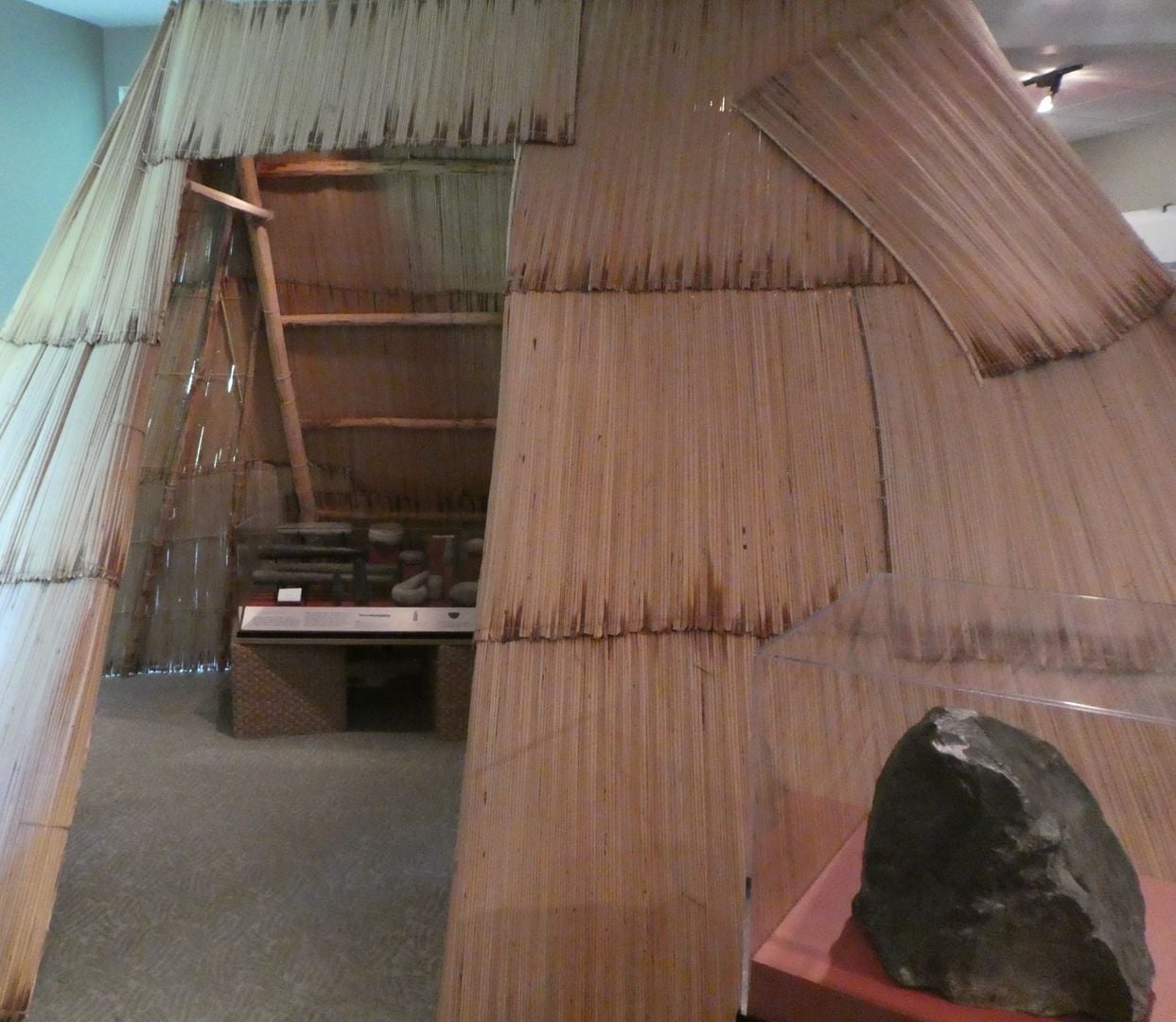
Displays inside the longhouse
The museum uses the interior of the longhouse to display a number of Plateau Indian tools. According to the display:
“The Plateau tool kit included a variety of tools used by women and men. Women used mortars and pestles to grind and pound food, scrapers to clean and prepare hides, knives to clean and fillet salmon, and needles and awls to sew tule mats and weave baskets. Men used adzes and mauls for carving canoes and building fish weirs, knives to carve weapon shafts and cut lodge poles and sharp stone points for hunting and fishing.”
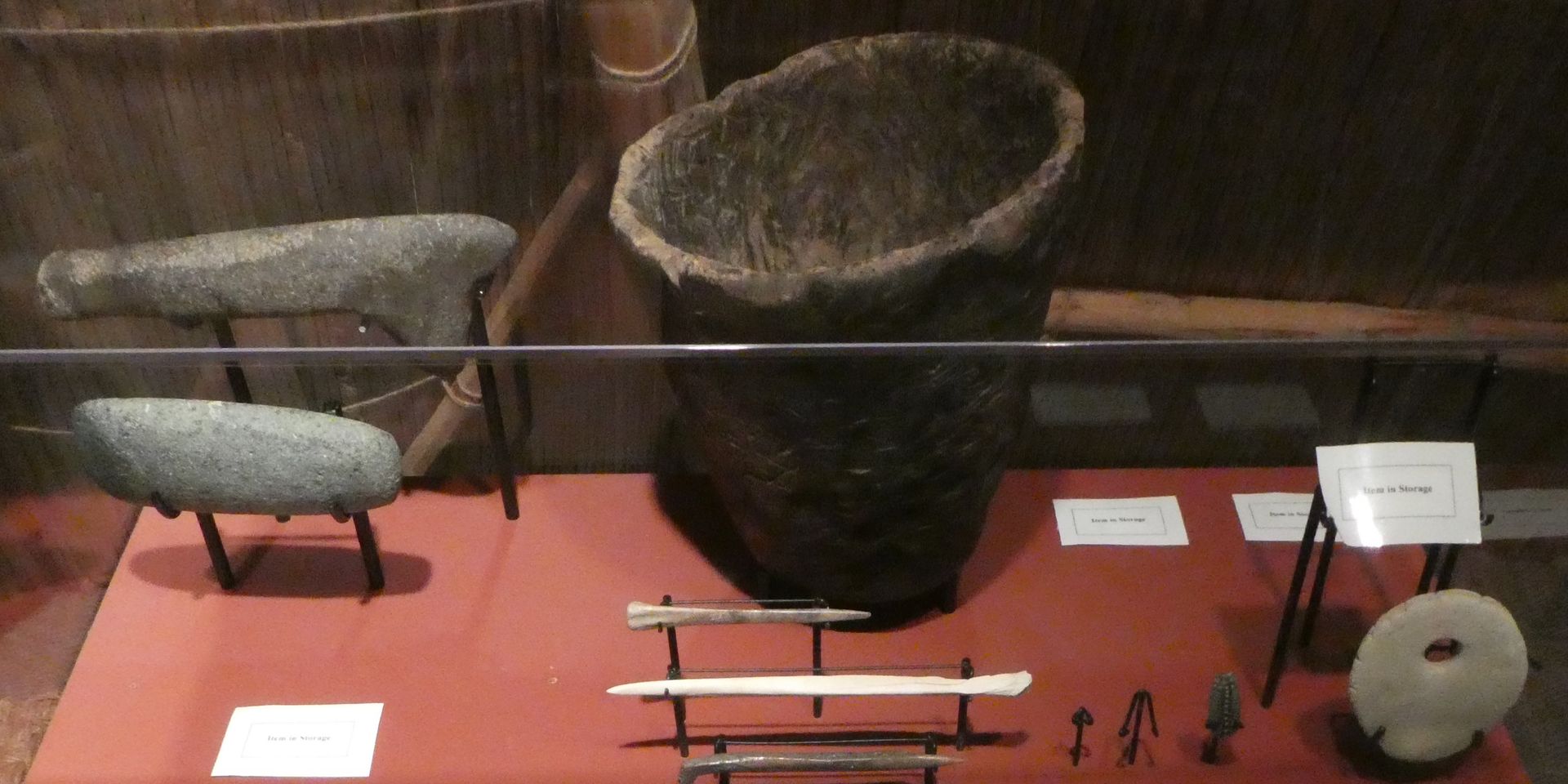
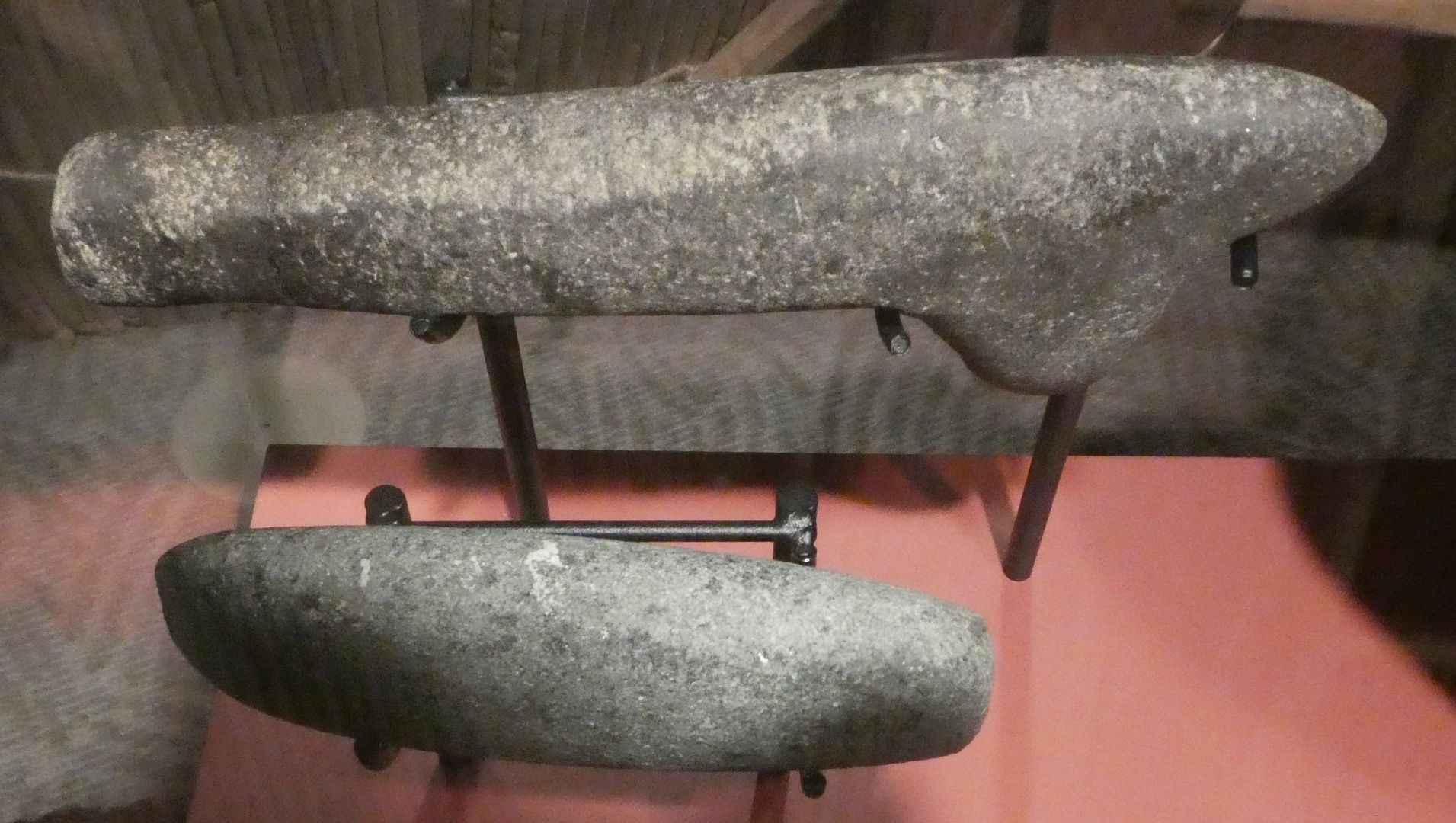 Shown above are two stone tools: a hammer stone and a stone wedge.
Shown above are two stone tools: a hammer stone and a stone wedge.  Shown above are some bone needles.
Shown above are some bone needles. 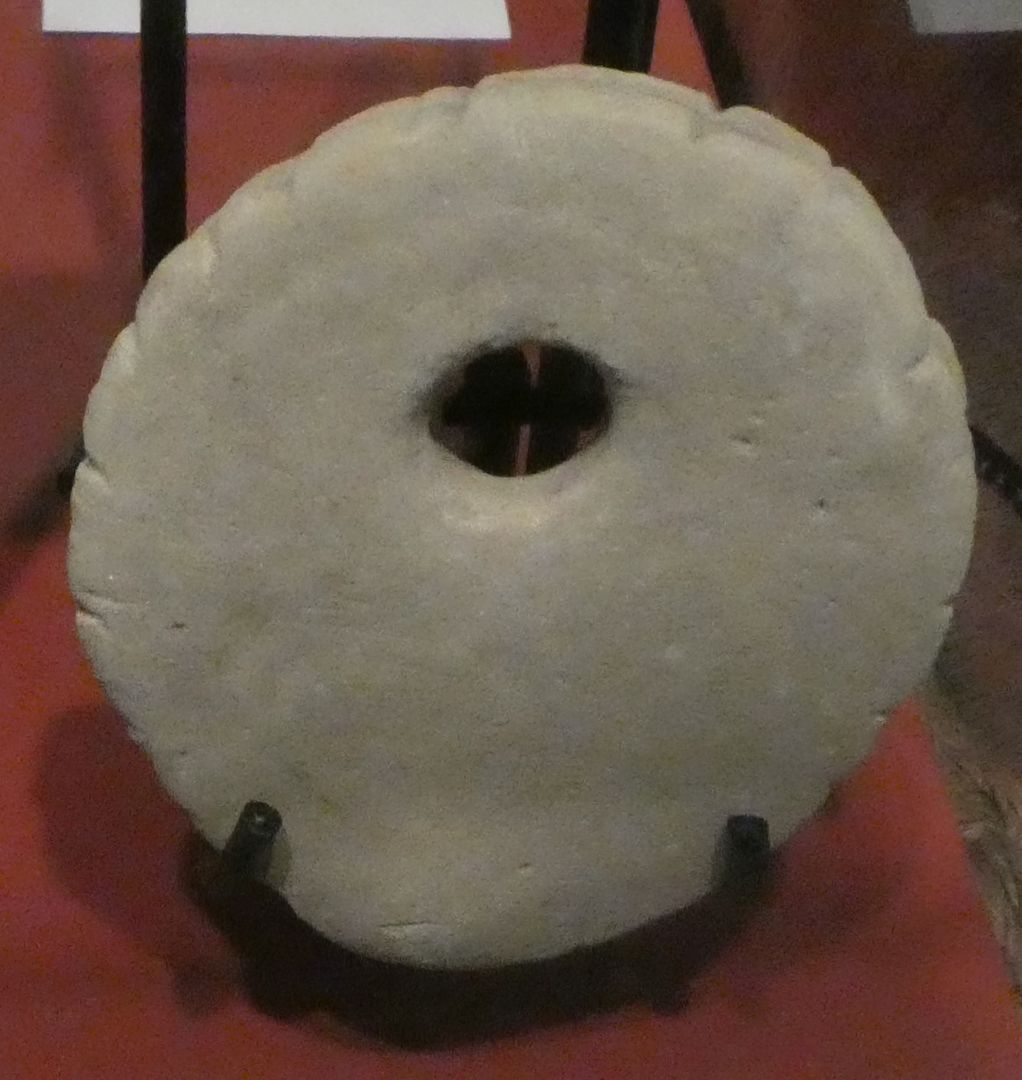 Fishing was an important economic activity. Shown above is a stone fishing net weight.
Fishing was an important economic activity. Shown above is a stone fishing net weight.  hown above is a wooden bowl.
hown above is a wooden bowl. 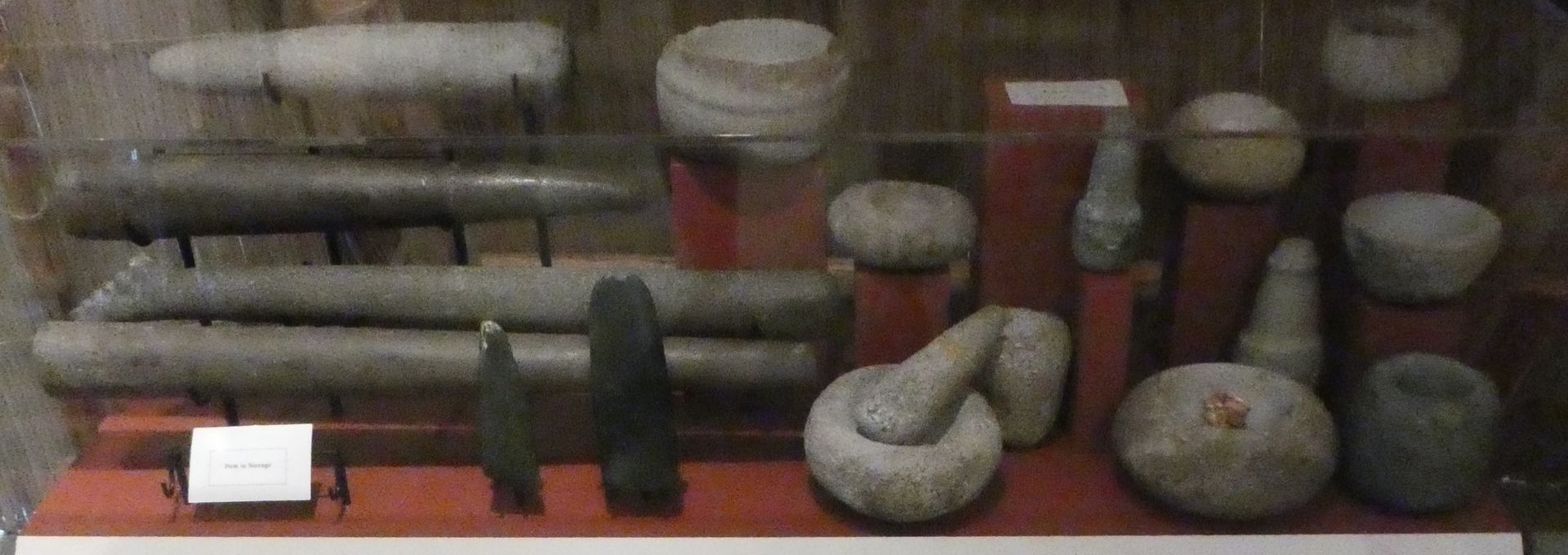
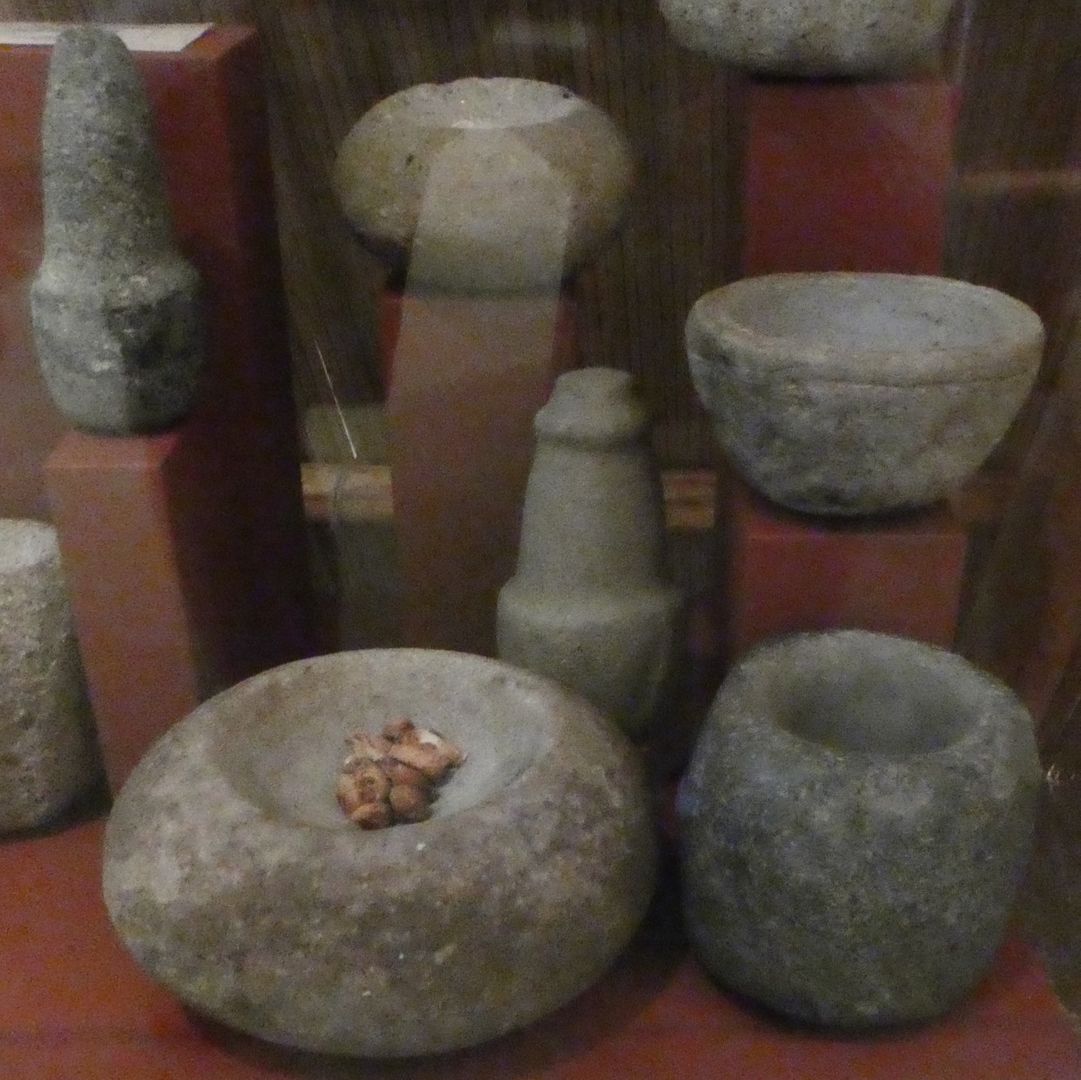 Shown above are stone bowls, mortars, and pestles.
Shown above are stone bowls, mortars, and pestles.  Shown above is a mortar and pestle which was used in processing food.
Shown above is a mortar and pestle which was used in processing food. 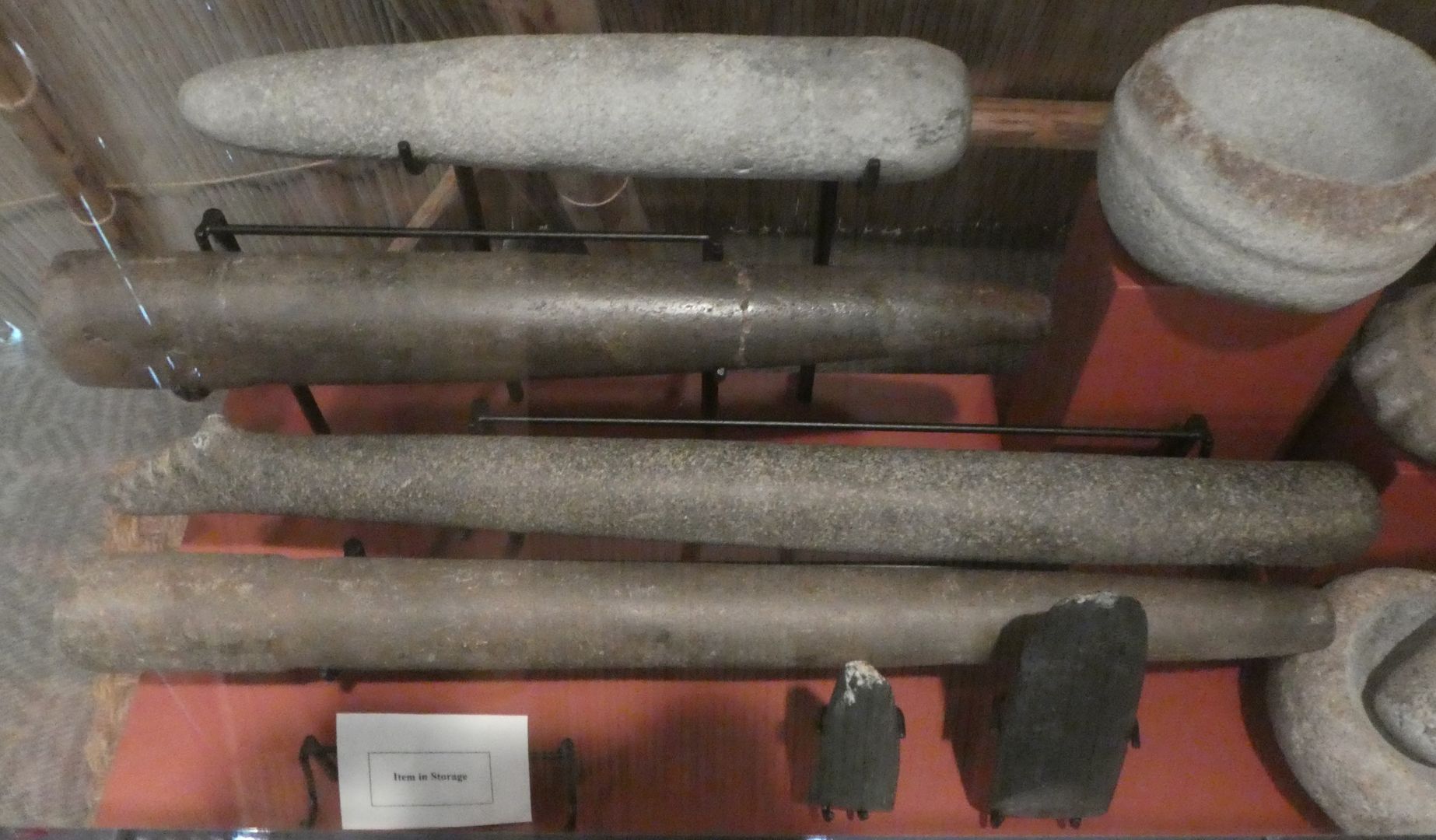
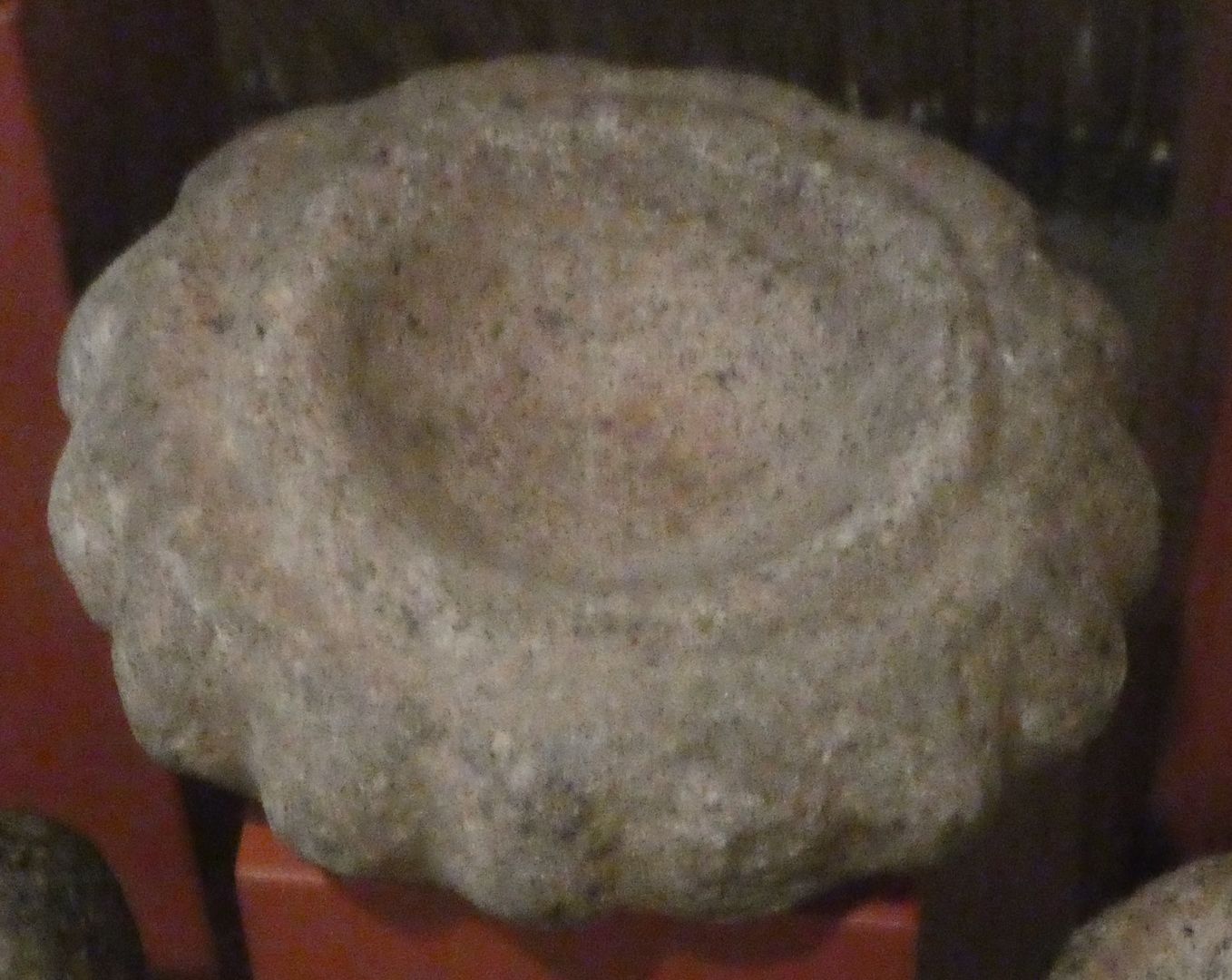
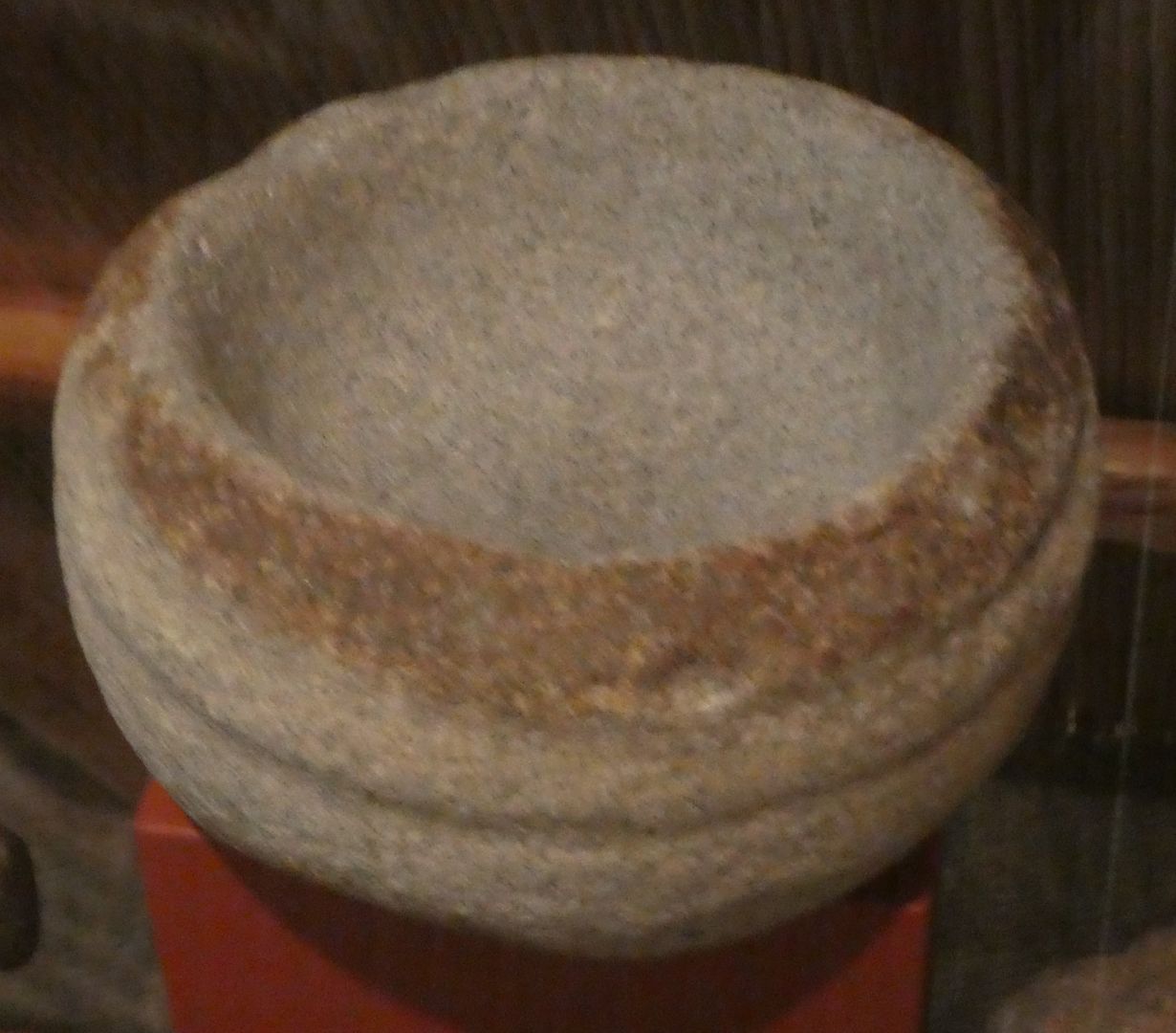
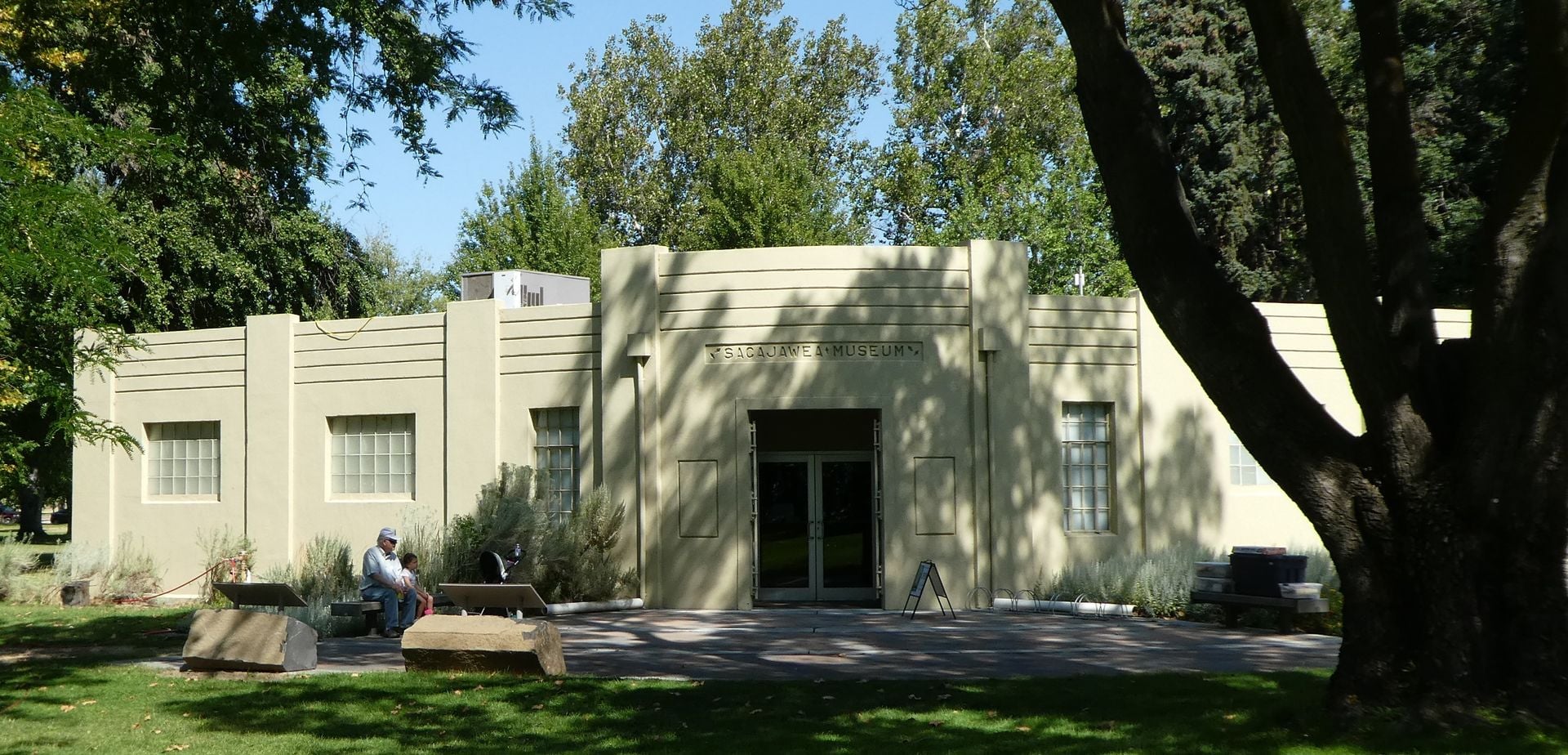
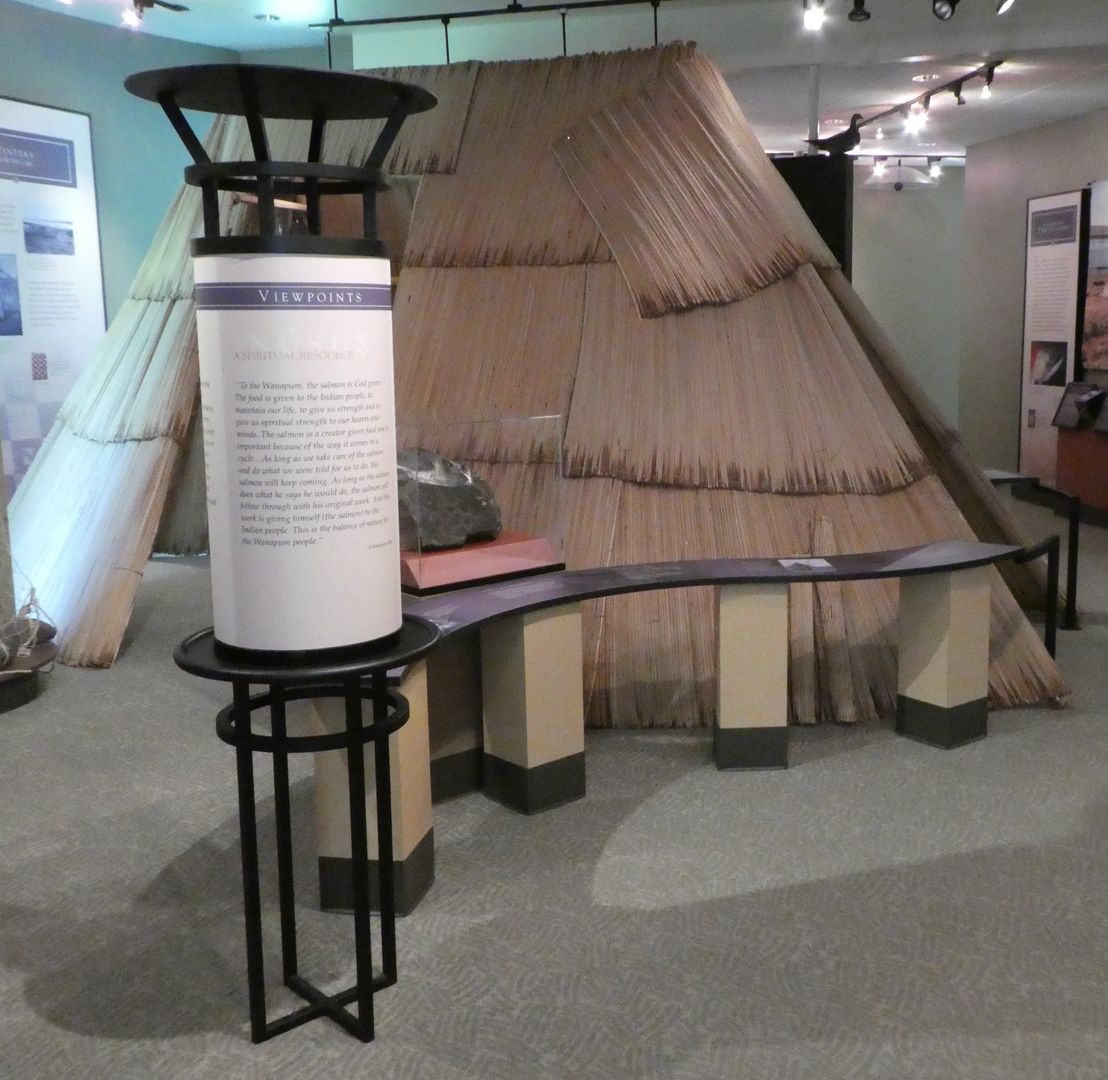
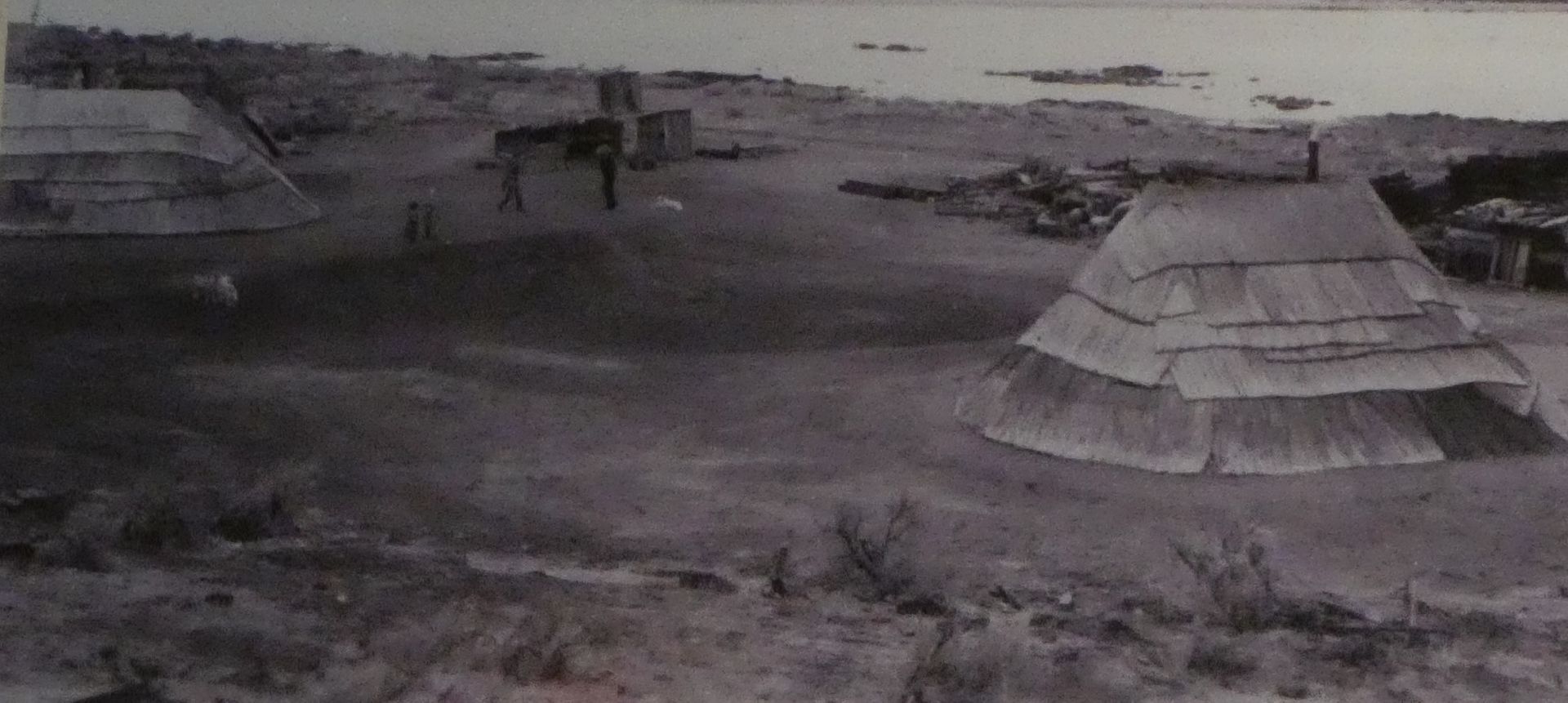

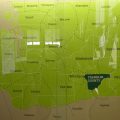
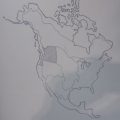
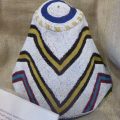
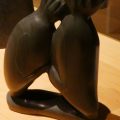
Leave a Reply